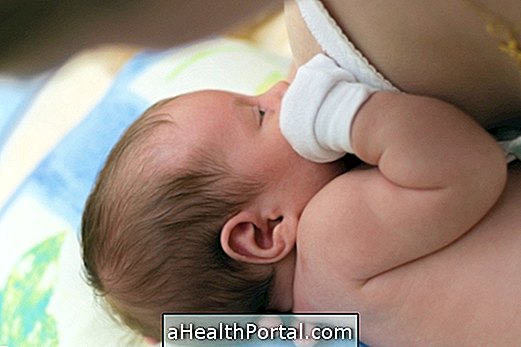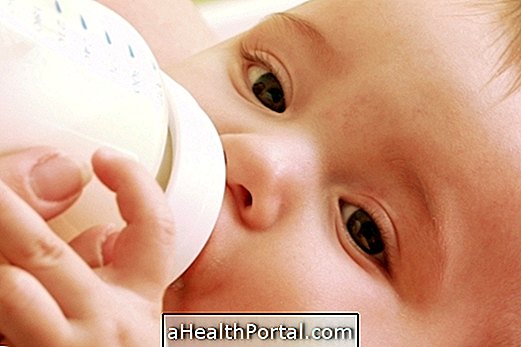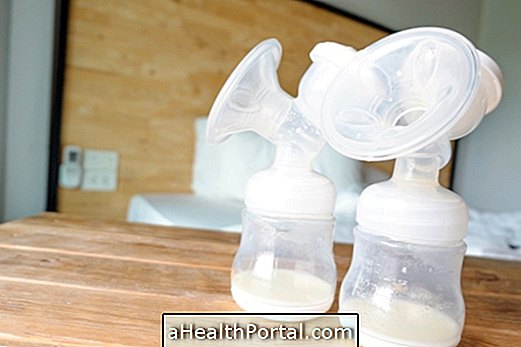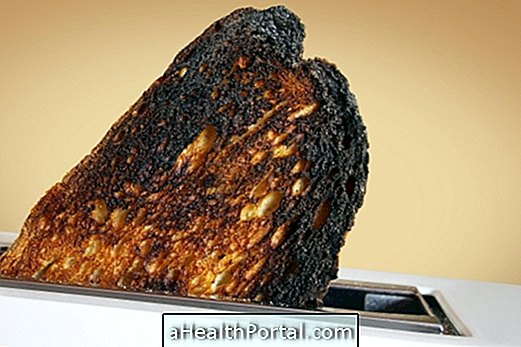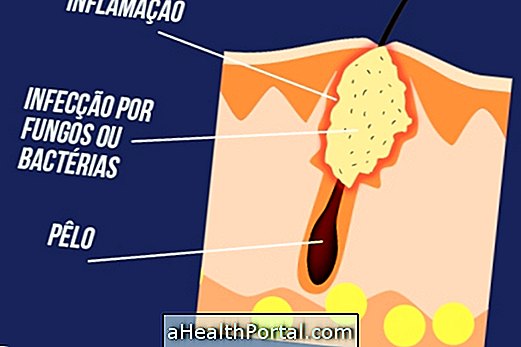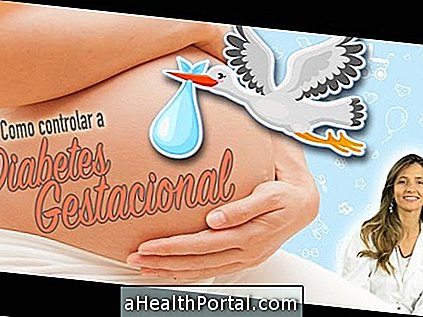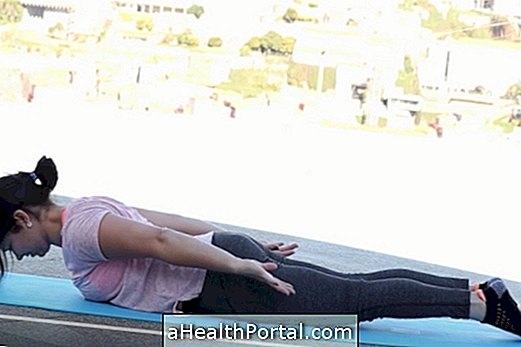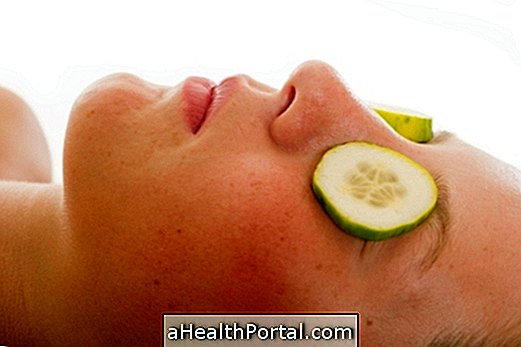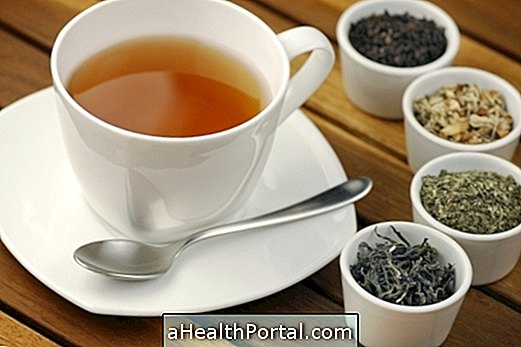Breastfeeding has benefits for the mother and the baby and should be encouraged by all in the family, being the best option for feeding the baby from birth to at least its 6 months of life, although it will be extended up to 2 years of age or even when the baby and the mother want.
However, the woman is not born knowing how to breastfeed and it is common to have doubts and problems during this phase, so it is important that the pediatrician can clarify all doubts and support the woman throughout breastfeeding. Learn how to solve common breastfeeding problems.
To properly breastfeed there are certain steps that the mother should follow whenever breastfeeding the baby. Are they:
Step 1: Realize that the baby is hungry

For the mother to realize that the baby is hungry she must be attentive to some signs, such as:
- The baby seeks to grasp any object that touches the region of the mouth. So if the mother puts her finger near the baby's mouth it should turn her face and try to put her finger in her mouth whenever she is hungry;
- The baby looks for the nipple;
- The baby sucks his fingers and keeps his hand in his mouth;
- The baby is restless or crying and his crying is loud and loud.
Despite these signs, there are babies who are so calm that they expect to be fed. Therefore, it is important not to leave the baby without eating more than 3-4 hours, putting it in the chest even if he does not show these signs. Breastfeeding should be done within this interval during the day, but if the baby is gaining adequate weight, you will not need to wake him up every 3 hours to nurse at night. In this case, the mother can nurse only once during the night until the baby reaches 7 months. Know what the size of the baby's stomach is at each stage of life.
Step 2: Adopt a comfortable position

Before placing the baby in the breast, the mother should adopt a comfortable position. The environment should be calm, preferably noiseless, and the mother should keep her back straight and support her well to avoid pain in the back and neck. However, the positions that the mother can adopt to breastfeed may be:
- Lying on her side, with the baby also lying on her side, facing her;
- Sitting in an armchair with her back straight and supported, holding the baby with both arms or the baby under one arm or with the baby sitting on one of her legs;
- Standing up, keeping your back straight.
Whatever the position, the baby should be with the body facing the mother and with the mouth and nose at the same height as the breast. Know the best Positions to breastfeed the baby in each phase.
Step 3: Put the baby on the chest

After being in a comfortable position the mother should position the baby to breastfeed and should first be very careful when positioning the baby in the chest being attentive to the following factors:
- First: Straighten the nipple on the baby's upper lip or on the baby's nose so that it opens wide;
- Second: Move the baby to him to suck the breast when his mouth is wide open.
In the first days after giving birth, the baby should be offered 2 boobs, with about 10 to 15 minutes in each for one to stimulate milk production.
After the milk has descended, by the 3rd day after birth, the baby should be allowed to nurse until the breast is emptied and then offered to the other breast. At the next feeding, the baby should start at the last breast. The mother may attach a pin or a tie to the blouse on the side that the baby will have to nurse first on the next feeding so as not to forget. This care is important because normally the second breast is not as empty as the first, and the fact that it does not completely empty can decrease the milk production in this breast.
In addition, the mother should alternate the breasts because the composition of the milk changes during each feeding. At the beginning of the feeding the milk is richer in water and at the end of each feeding is richer in fat, which favors the baby's weight gain. So if the baby is not gaining enough weight, it is possible that he is not receiving this part of the milk. Here's how to increase breast milk production.
Step 4: Observe if the baby is breastfeeding well
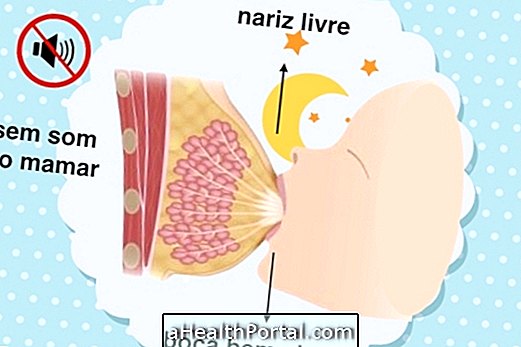
To realize that the baby is nursing well, the mother should note that:
- The baby's chin touches the breast and the baby's nose is freer to breathe;
- The baby's belly touches the mother's belly;
- The baby's mouth is wide open and the lower lip should be facing outward, like the fish's;
- The baby gathers part or all of the areola of the breast and not only the beak of the breast;
- The baby is calm and you can hear the noise of him swallowing the milk.
The correct handle when the baby is nursing is a very important factor for the baby to breastfeed enough and can grow gaining weight and also to avoid cracks in the mother's nipples, which causes pain, clogging of the duct, causing a lot of discomfort during feedings. Fissures in the nipples are one of the main factors in the abandonment of breastfeeding.
Step 5: Identify if your baby has had enough
To identify that the baby has suckled enough, the woman should check that the breast that the baby suckles is emptier, becoming slightly softer than before it begins to suckle and can press close to the nipple to check if milk is still flowing. If the milk does not come out in large quantity, leaving only small drops, this indicates that the baby has suckled well and managed to empty the breast.
Other signs that may indicate that the baby is satisfied and the belly full are the slowest suction at the end of the feeding, when the baby spontaneously releases the breast and when the baby becomes more relaxed or sleeps in the breast. However, the fact that the baby falls asleep does not always mean that he has breastfed enough, as there are babies who become sleepy during the feeding. Therefore, it is important for the mother to check whether or not the baby has emptied the breast.
Step 6: How to remove baby from breast

To remove the baby from the breast without risk of injury to the mother should follow the following steps:
- Place your little finger in the corner of the baby's mouth while he is still 'sucking' for him to drop the nipple and only then remove the baby from the breast.
After the baby suckles, it is very important to put him to belch for him to eliminate the air that he swallowed during the feeding and not to gossip. To do this, the mother can place the baby in her lap, upright, leaning on her shoulder and patting her back gently. It may be helpful to put a diaper on your shoulder to protect your clothing because it is common to get a little milk when the baby belches.
Breastfeeding times
As for the hours of breastfeeding, the ideal is that it is done on demand, that is, whenever the baby wants. Initially your baby may need to breastfeed every 1h30 or 2h during the day and every 3 to 4 hours at night. Gradually your gastric capacity will increase and you will already be able to carry a larger amount of milk, increasing the time between breastfeeds.
There is general agreement that the baby should not spend more than 3 hours without suckling, even at night, until 6 months of age. It is recommended that if he is sleeping the mother will wake him up to breastfeed and make sure he has really suckled, as some sleep during breastfeeding.
From the age of 6 months, the baby can eat other foods and sleep through the night. But each baby has its own growth rate and it is up to the mother to breastfeed at dawn or not.
When to stop breastfeeding
Knowing when to stop breastfeeding is a common question for practically every mother. The World Health Organization recommends that breastfeeding be exclusive up to 6 months of the baby and that lasts until at least 2 years of age. The mother may stop breastfeeding from this date or wait for the baby to decide not to breastfeed anymore.
From 6 months on milk no longer provides enough energy that the baby needs to develop and it is at this stage that there is the introduction of new foods.
By 2 years of age, as well as eating almost everything an adult eats, he will also be able to find comfort in situations other than the mother's womb, which for him initially represents a safe haven.
See too:
- Mother feeding prevents cramps in baby
- Teas that can not be taken during breastfeeding
- How to keep breastfeeding after going back to work
Important care
The woman should have some breastfeeding care and healthy lifestyle habits, such as:
- Feed properly, avoiding spicy foods so as not to interfere with the taste of milk
- Avoid drinking alcohol, which passes to the baby, damaging your renal system
- Do not smoke
- Do moderate physical exercise
- Wear comfortable clothing and bras that do not tighten your breasts.
- Avoid taking medication
If the woman gets sick and has to take some kind of medicine, she should ask the doctor if she can continue breastfeeding, because there are several medicines that are secreted in the milk and can affect the development of the baby. During this phase, you can go to the human milk bank, offer your own breast milk if the woman has frozen some or, in the last case, offer the baby powder adapted for babies, such as Nestrogeno and Nan, for example.
